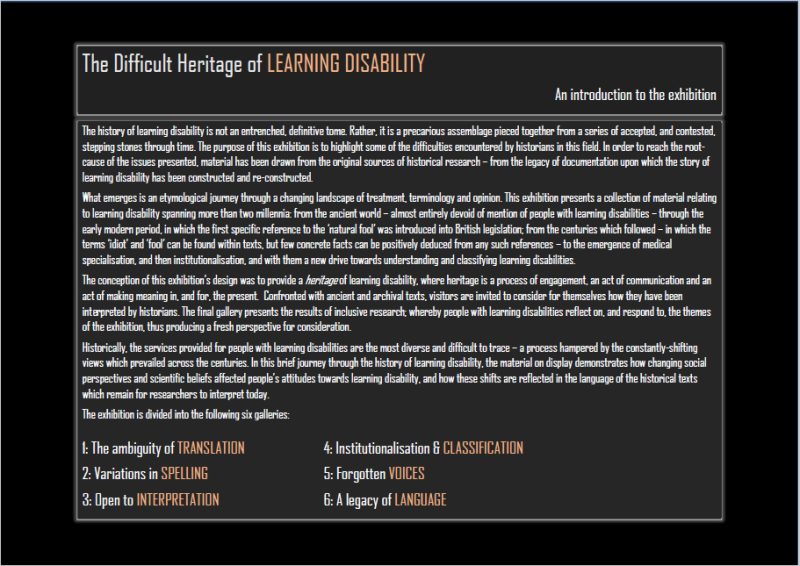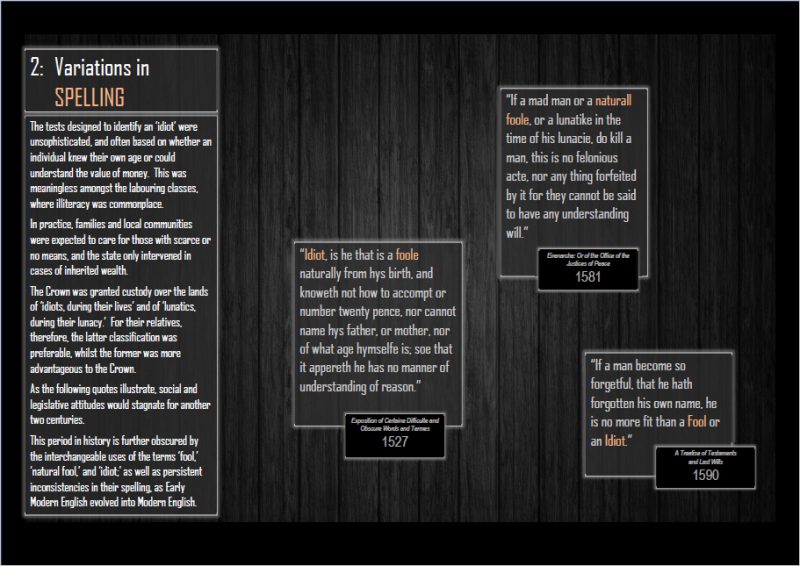John Langdon Down’s Normansfield:
Stories from the Archives and their Contribution to Heritage

Department of Critical and Historical Studies
Kingston School of Art
Kingston University London
April 2023
Abstract
The pursuit of social acceptance and integration, equal rights, and self-advocacy, is an ongoing struggle for people with a learning disability. An important part of this endeavour is the understanding – and ownership – of the history of learning disability. One of the pathways to achieving this is through heritage: the interpretation and (re)presentation of history to a contemporary audience.
This archives-based research project explores the early years of Normansfield Hospital, founded in 1868 by John Langdon Down (1828–1896), one of the first institutions dedicated to the understanding, education, and care, of people with a learning disability. The extensive Normansfield Archive Collection is now held at the London Metropolitan Archives, and Normansfield’s largest surviving original building has become home to the Langdon Down Museum of Learning Disability.
The project is a multidisciplinary one, and it encompasses the fields of cultural heritage and archives, museum studies and museum interpretation, and the history of people with a learning disability. Through my engagement with the Normansfield Archive Collection, the thesis probes issues around archival research. These include addressing problematic historical language; negotiating presences and absences; giving voice to the voiceless; inclusivity in theory and in practice; creating narratives; and exploring different approaches to the museological interpretation of archival material.
The project’s outcomes comprise a written thesis and three creative pieces. These latter serve as prototype experiments in interpretation strategies: a video presentation which tells Lucy’s Story; a six-stop audio guide and booklet; and the design for an exhibition entitled The Difficult Heritage of Learning Disability. The thesis addresses the historical complexities and contemporary issues of researching, interpreting, and (re)presenting the history of people with a learning disability; and explores some of the ethical considerations involved. It also questions the positionality of this history in relation to ‘Difficult’ Heritage. The project contributes new material, it encourages fresh discourse, and it shines new light upon this critical – yet largely marginalised and underrepresented – subject.
Key Words
Normansfield Hospital; John Langdon Down; Learning Disability; Archives; Research Practice; Museum Interpretation; Heritage and Museum Studies; ‘Difficult’ Heritage; The Langdon Down Museum of Learning Disability.
Samples of creative work
Audio Guide and Booklet
This is the sixth and final stop of the audio guide I created for the Langdon Down Museum of Learning Disability. It gives both a little taste of the Normansfield Archive Collection and a glimpse into the everyday concerns of the parents who entrusted their children to the care of John and Mary Langdon Down. Five letters have been carefully selected, each from a different mother and narrated in a different voice. These demonstrate the surprising and remarkable honesty with which people were writing to the Langdon Downs as they variously enquire after the progress of their child, coordinate home visits, manage clothing requirements, and disclose intimate and personal details of their everyday lives. Their correspondence is infused with a charming honesty and a disarming warmth which bridges the gap between the modern-day listener and the characterful women who sat down to put pen to paper over a hundred and thirty years ago.
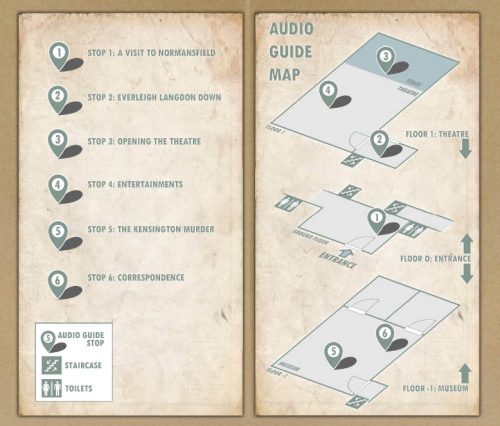
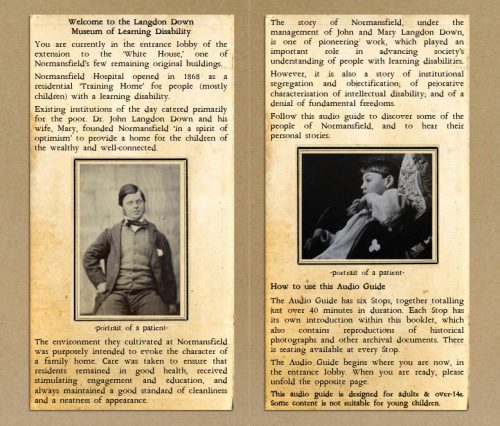
Lucy’s Story
Lucy was admitted to Normansfield in 1879 at the age of 5, and remained there until her death in 1900. The archival content in her case is particularly rich because her grandmother, mother, and father each wrote separately to the Langdon Downs – thus providing multiple perspectives. Her story is told by these three protagonists, through carefully edited versions of their letters, along with a few supplementary documents from the Archive.
Lucy’s Story demonstrates how archival documents can be used to rediscover a person, and reconstruct a story, both of which had been entirely lost over time. For the researcher, it is also an exercise in filling gaps and making choices. Her story both provides new insight into life at Normansfield, and raises questions beyond her individual case. For example: how typical is her story; what are the limitations of the archive findings; and, now that she has been ‘found’, what obligation is there towards Lucy and her story going forward?
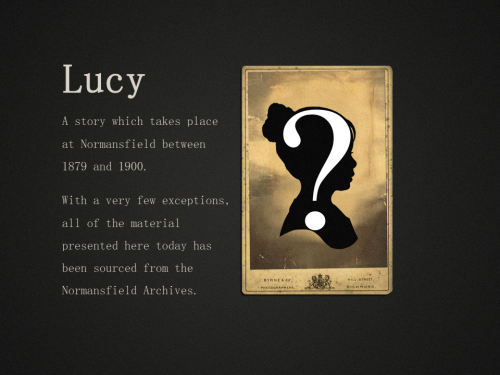
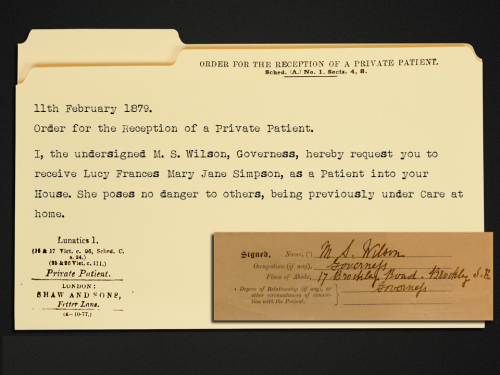
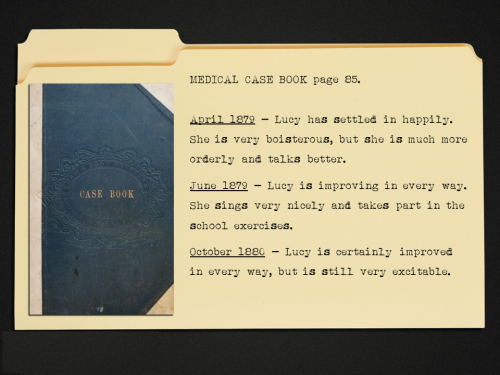
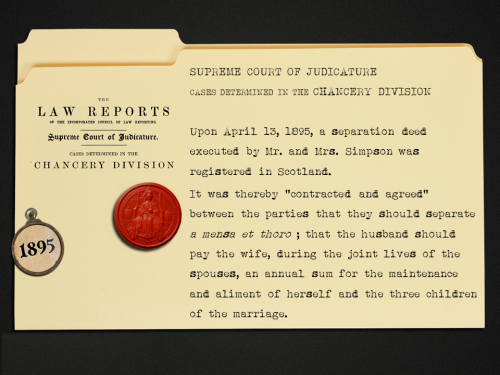
Originally created in Microsoft PowerPoint, Lucy’s Story has since been converted to a video which runs for approximately 47-minutes. For reasons of copyright, I am not able to post a sample of the video – but the stills above give a flavour of the imagery, and the sound samples below of the audio content of the letters.
Sample letter from Lady Hall
Sample letter from William Simpson
Sample letter from Alice Simpson
Exhibition Design
As I delved into background reading on the early history of people with a learning disability, I found myself growing increasingly frustrated by the many inconsistencies that I was encountering, and by how malleable to different and conflicting interpretation the scarce facts and historical evidence appeared to be. Instead of trying to join the debate – which would only serve, it seemed to me, to further perpetuate the problem – I wanted instead to shine a light on it.
I decided to attempt a more ambitious creative piece – to design an entire exhibition exhibition. The exhibition would be directed towards the past, primarily exploring (with broad strokes) the history leading up to the period in which Normansfield Hospital was founded. It describes and demonstrates the fragmentary and ambiguous nature of much of this early history. In undertaking to produce this piece, I developed a greater understanding of the history of people with a learning disability, and thus my understanding of the broader context of my work on Normansfield.
